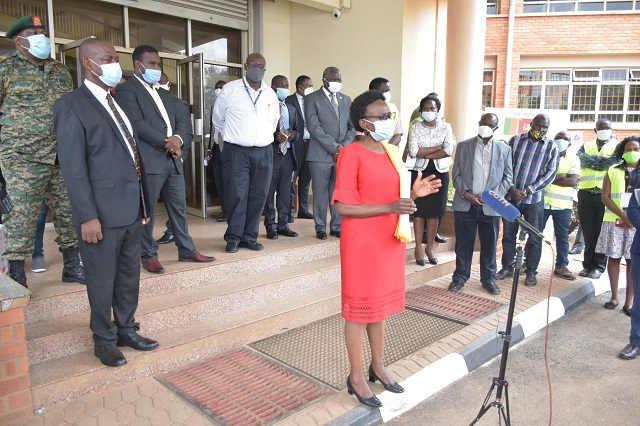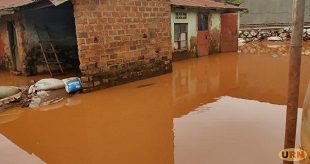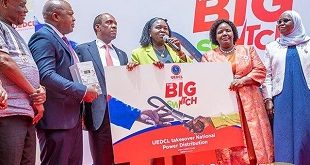
Kampala, Uganda | THE INDEPENDENT | The Ministry of Health has embarked on a second rapid assessment aimed at identifying the source of COVID-19 infections with in specific communities.
According to the ministry of health, the results from the assessment will inform the country’s response to the disease. It is supposed to give the country a better picture of which population groups are most affected by the disease and give an estimate of the proportion of exposure among different population groups.
The Ministry says the assessment is also supposed to determine the rate of secondary attacks among contacts and children living in communities where cases are detected.
The assessment is targeting 10,000 people from 11 selected districts. The 11 districts targeted include; Masaka, Kyotera, Rakai, Adjumani, Buikwe, Gulu, Amuru, Ntungamo, Isingiro, Kakumiro and Kasese.
While flagging off the teams that are going to carry out the assessment, the minister of health. Dr. Jane Ruth Aceng said that since the lockdown has been lifted at a time when the country is reporting community cases of the disease, it is important to identify the focal point of the virus to avoid wide spread community transmissions.
“At this juncture, Uganda’s response is at a critical stage where the status and foci of the community transmissions need to be urgently determined so as to provide information that will guide further epidemic control measures. This is why a team has been set up to conduct a targeted assessment exercise to determine the extent of transmissions and possible risk groups,” he said.
The assessment is targeting people at border crossing points, road law enforcement officers, health care workers, taxi drivers, boda-boda cyclists, sex workers, household, factory workers, fishing communities, slum areas and the elderly. Blood and nasopharyngeal swab samples will be used.
Yesterday, during an interview with the COVID-19 incident manager, Lt. Col. Dr. Henry Kyobe told Uganda Radio Network -URN that majority of the country’s COVID-19 cases come from truck drivers, factory workers and fishing communities.
This will be the country’s second rapid assessment to be carried out since the country begun reporting cases of COVID-19. In the first assessment, over 23,000 people from 50 border districts took part in a randomized trail. Preliminary results from the assessment showed that there were no cases of community transmissions in the country after only four cases were picked.
The launch of the second assessment comes at a time when the World Health Organsisation-WHO is re-echoing the call for all countries to carry out contact tracing of COVID-19 as a means of controlling the spread of the disease.
WHO boss Dr. Tedros Adhanom Ghebreyesus during a weekly press meeting on Monday said that while lockdowns helped slow the spread of the disease in the beginning, they cannot stop the spread and as such tracing is needed.
“One of the key tools for suppressing transmission in indigenous communities – and all communities – is contact tracing. No country can get control of its epidemic if it doesn’t know where the virus is. Lockdown measures can help to reduce transmission, but they cannot completely stop it. Contact tracing is essential for finding and isolating cases and identifying and quarantining their contacts,” he said.
As of yesterday, the country had a total of 1,072 cases reported with no deaths.
******
URN
 The Independent Uganda: You get the Truth we Pay the Price
The Independent Uganda: You get the Truth we Pay the Price



